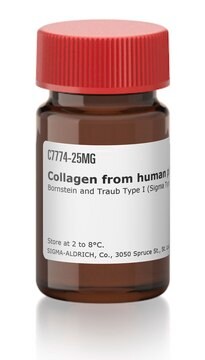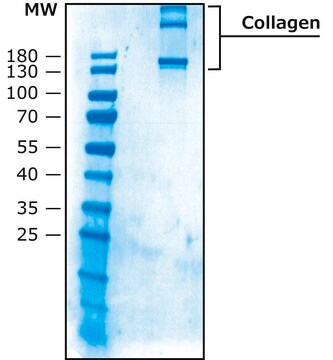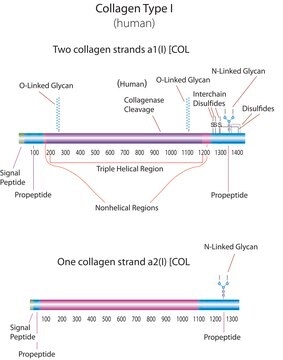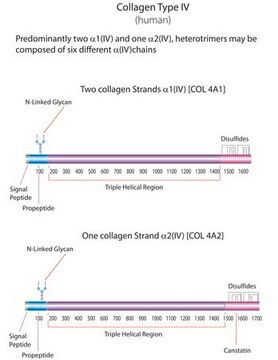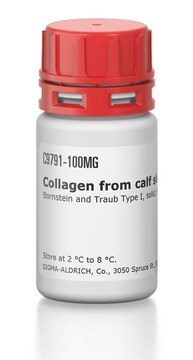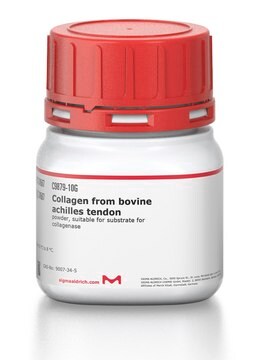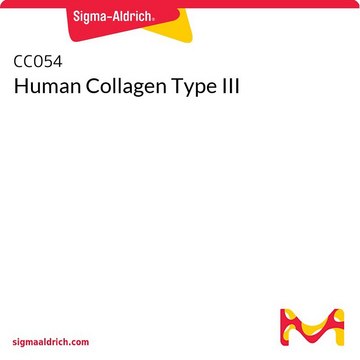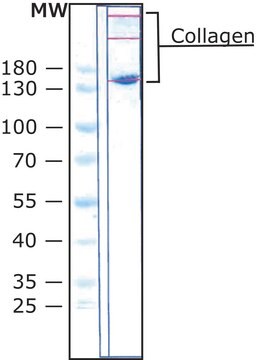Key Documents
C3657
Human Collagen Type V
from human placenta, powder, suitable for detection assays
About This Item
Polecane produkty
product name
Collagen from human placenta, Bornstein and Traub Type V (Sigma Type IX), powder
pochodzenie biologiczne
human placenta
Poziom jakości
Postać
powder
zanieczyszczenia
HIV, hepatitis B and hepatitis C, none detected
rozpuszczalność
aqueous acid: soluble
numer dostępu UniProt
Zastosowanie
detection
temp. przechowywania
2-8°C
informacje o genach
human ... COL5A1(1289)
Szukasz podobnych produktów? Odwiedź Przewodnik dotyczący porównywania produktów
Komponenty
Przestroga
Uwaga dotycząca przygotowania
Komentarz do analizy
Inne uwagi
Kod klasy składowania
11 - Combustible Solids
Klasa zagrożenia wodnego (WGK)
WGK 1
Temperatura zapłonu (°F)
Not applicable
Temperatura zapłonu (°C)
Not applicable
Środki ochrony indywidualnej
Eyeshields, Gloves, type N95 (US)
Certyfikaty analizy (CoA)
Poszukaj Certyfikaty analizy (CoA), wpisując numer partii/serii produktów. Numery serii i partii można znaleźć na etykiecie produktu po słowach „seria” lub „partia”.
Masz już ten produkt?
Dokumenty związane z niedawno zakupionymi produktami zostały zamieszczone w Bibliotece dokumentów.
Klienci oglądali również te produkty
Nasz zespół naukowców ma doświadczenie we wszystkich obszarach badań, w tym w naukach przyrodniczych, materiałoznawstwie, syntezie chemicznej, chromatografii, analityce i wielu innych dziedzinach.
Skontaktuj się z zespołem ds. pomocy technicznej